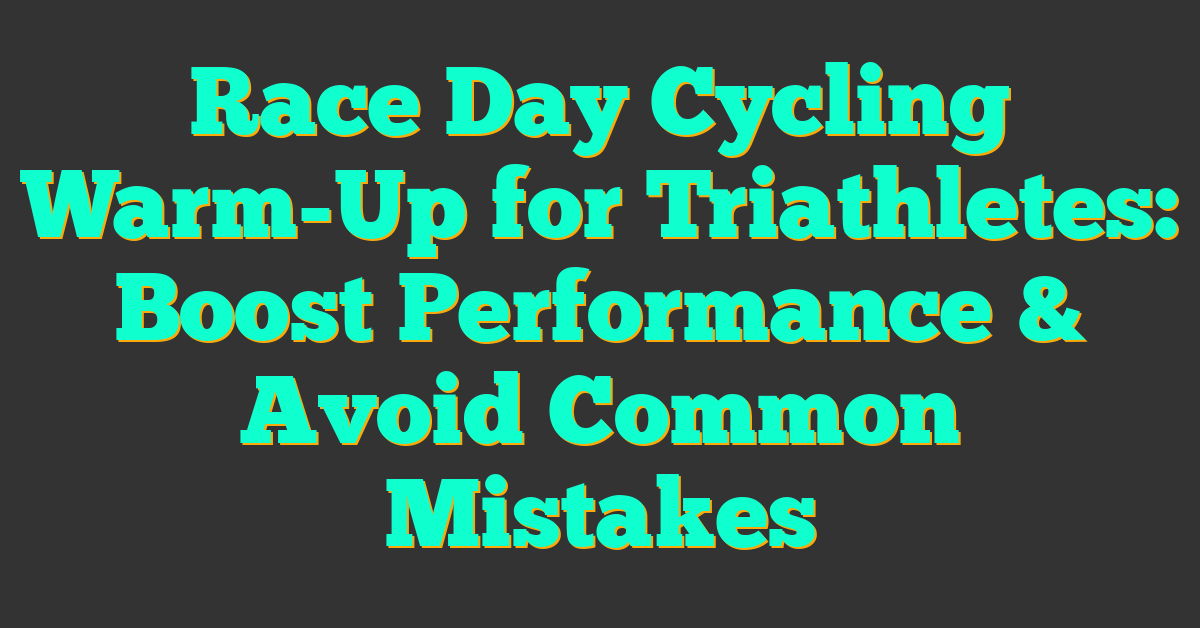Training for a triathlon is no joke, and running after swimming and cycling can really test your endurance. Over the years, I’ve learned that tweaking your running form can make a huge difference in how long and how well you perform. It’s not just about pushing harder but running smarter.

I’ve picked up some simple hacks that help me conserve energy and keep my stride efficient, especially when my legs start to feel heavy. Whether you’re a beginner or a seasoned triathlete, these tips can help you run stronger and finish faster without burning out. Let’s dive into some game-changing form tweaks that’ll keep you going mile after mile.
Importance of Running Form in Triathlon Endurance
Running form plays a crucial role in triathlon endurance. Efficient form reduces fatigue, allowing me to maintain pace after long swims and bike legs. Proper mechanics optimize oxygen use and muscle engagement, which prevents early energy depletion.
I focus on posture because a slight forward lean from the ankles improves balance and propulsion. Keeping my shoulders relaxed and arms swinging naturally avoids unnecessary tension and energy waste. Landing with the midfoot beneath my hips promotes smoother transitions and less impact stress.
Adjusting my stride length helps maintain cadence without overstriding, which often leads to injuries and slows me down over time. Monitoring foot strike, whether midfoot or forefoot, ensures I use the calf muscles effectively, boosting endurance.
Running economy improves dramatically once I fine-tune these aspects during training. For triathletes, this efficiency means conserving precious energy for the final race stretch. Triathlon coaches worldwide emphasize form because even minor improvements can translate into several minutes saved during competition.
Key Running Form Hacks for Triathlon Success
Mastering your running form helps conserve energy throughout the triathlon. I focus on practical adjustments that make a real difference in endurance and speed.
Optimizing Posture and Alignment
Start with a tall, straight posture. Keep your head aligned over your shoulders, and avoid leaning too far forward or backward. Engage your core to support your spine and reduce fatigue. Keep your hips level and stable to promote smooth, efficient movement. Good posture opens airways for better oxygen intake, a crucial advantage after swimming and cycling.
Efficient Foot Strike Techniques
Aim for a midfoot strike—landing softly on the middle of your foot. This reduces impact stress and helps with quicker ground contact. Avoid heavy heel striking, which wastes energy and strains joints. Keep your feet landing under your hips to maintain balance and power. Practicing this technique improves running economy and lowers the risk of injury.
Cadence and Stride Length Adjustments
Maintain a cadence around 170 to 180 steps per minute for optimal efficiency. Shorten your stride if it feels too long, as overstriding wastes energy and slows you down. A slightly quicker, lighter turnover conserves oxygen and helps maintain consistent speed during the run leg. Regularly monitoring cadence with a watch or app can reinforce this habit.
Arm Movement and Relaxation Tips
Keep your arms bent at about 90 degrees and swing them forward and backward along your body’s midline. Avoid crossing your arms over your chest to prevent wasted motion. Relax your shoulders and hands to preserve upper body energy. Efficient arm movement supports a smooth rhythm and propulsion, reducing fatigue during long runs.
Training Drills to Improve Running Form
I use targeted drills to develop efficient running form that lasts through the triathlon. Consistent drill practice helps build muscle memory and sharpens mechanics needed for endurance.
- High Knees: Drive knees to hip level while keeping an upright posture. This drill promotes quick leg turnover and engages hip flexors, essential for maintaining cadence after cycling.
- Butt Kicks: Bring heels to glutes rapidly, focusing on relaxed shoulders and controlled arm swing. It reinforces a midfoot strike and improves hamstring activation for smoother strides.
- A-Skip: Combine knee lift and foot dorsiflexion with rhythmical skipping. This drill enhances coordination, balance, and foot placement, crucial for preserving energy during the run.
- Bounding: Take exaggerated forward leaps, emphasizing powerful, controlled push-offs and landing softly on the midfoot. Bounding builds explosive strength and improves stride length without overstriding.
- Strides: Run 20 to 30 seconds at 85-90% max effort, concentrating on posture and relaxed breathing. Strides sharpen nervous system responsiveness and help lock in efficient mechanics at faster paces.
Incorporating these drills twice a week into your training helps reinforce the key elements of running form for triathlon endurance. Focused drill sessions make technical improvements easier to maintain during fatigue and extend your ability to finish strong in races.
Common Mistakes to Avoid During Triathlon Runs
I’ve seen many triathletes struggle with the same running faults that undermine endurance and cost valuable time. Here are key mistakes I focus on correcting with my athletes.
- Overstriding and Heel Striking: Overreaching with your foot extends your braking force and increases injury risk. Heel striking creates high impact forces that fatigue muscles early. Instead, keep your foot strike beneath your hips and aim for a midfoot landing.
- Poor Posture and Forward Lean: Leaning too far forward from the waist collapses your breathing capacity and strains your lower back. Maintain a tall chest with a slight lean from the ankles only to enable efficient oxygen exchange and forward momentum.
- Excessive Tension in Upper Body: Holding your shoulders tight or clenching your fists wastes energy. Relax your arms and shoulders to preserve stamina during the bike-to-run transition and long runs.
- Inconsistent Cadence: Dropping your step rate below 160 steps per minute can lengthen contact time and increase fatigue. A cadence of 170-180 helps maintain rhythm and reduces ground contact impact.
- Ignoring Muscle Imbalances: Neglecting strength and flexibility in your hips and core can cause compensations and overuse injuries. Functional strength training complements your running form work to stabilize your stride.
Fixing these common mistakes demands self-awareness and consistent practice in training. Tracking form with video or wearable tech provides valuable feedback that helps me and my athletes stay on track toward efficient, endurance-building running.
Incorporating Running Form Hacks into Triathlon Training
I integrate running form hacks into triathlon training by focusing on consistent practice and gradual adjustments. First, I suggest incorporating specific drills like High Knees and A-Skip twice weekly, since they build muscle memory for efficient mechanics. Next, I monitor posture and cadence during easy runs to reinforce midfoot striking and optimal step rate between 170 and 180 steps per minute.
I emphasize using video analysis or wearable tech to provide real-time feedback, as triathletes often struggle to self-correct form under fatigue. I also recommend combining running form work with brick workouts to simulate the transition from cycling to running, helping the body adapt to changes in muscle activation and maintain form during race conditions.
I prioritize addressing common mistakes in form during regular training reviews. When I spot overstriding or excessive upper-body tension, I introduce targeted corrections and mobility exercises to improve biomechanics and reduce injury risk. By embedding these form hacks into every training phase, triathletes maintain endurance and efficiency, which proves crucial for completing multisport events at a high level.
Conclusion
Mastering your running form isn’t about perfection overnight—it’s about steady, mindful improvements that add up. By weaving these hacks into your training, you’ll find yourself running more efficiently and feeling stronger, even after the swim and bike.
« Swim Breathing Tips for Triathlon Beginners: Master Your Rhythm and Boost Endurance
Hotel Hacks for Triathlon Race Stays: Smart Tips to Boost Comfort, Training & Savings »
Remember, small tweaks can make a big difference when fatigue sets in. Keep practicing, stay patient with the process, and trust that your body will adapt. When race day comes, you’ll be ready to tackle those final miles with confidence and endurance.





![Lamicall Bike Frame Bag Waterproof - [1s Release] [2 in](https://m.media-amazon.com/images/I/41WyOmmNsYL._SL500_.jpg)




